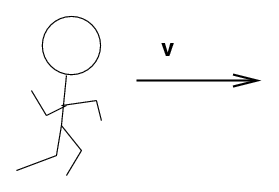
 Copyright © Michael Richmond.
This work is licensed under a Creative Commons License.
Copyright © Michael Richmond.
This work is licensed under a Creative Commons License.
Do you remember what Kinetic Energy is, and how to calculate it?

What if the body in question is not TRANSLATING (moving in a straight line), but REVOLVING around some point? If you are given the linear velocity of the body, it's no different.
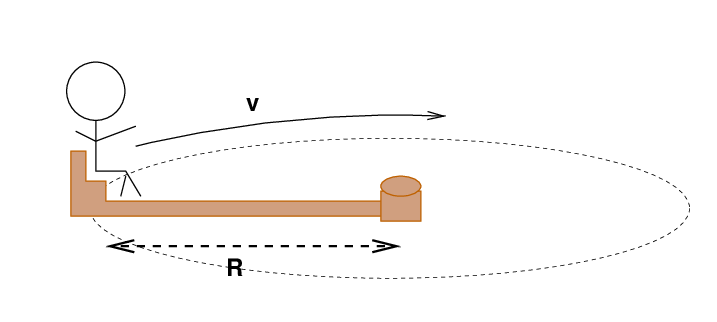
But what if you are given only the angular velocity?
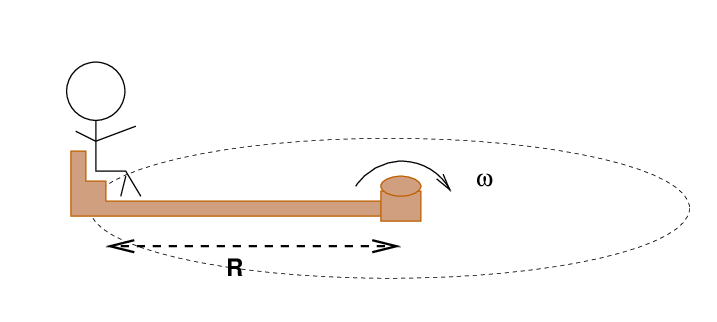
We can write the KE in terms of the angular velocity plus some other stuff ...
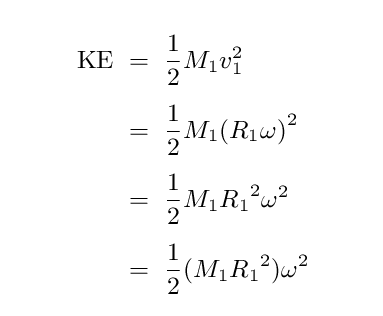
... but why should we bother?
The answer is -- if the rotating object is a complicated collection of pieces, then figuring out the linear velocity of each piece becomes tiresome.
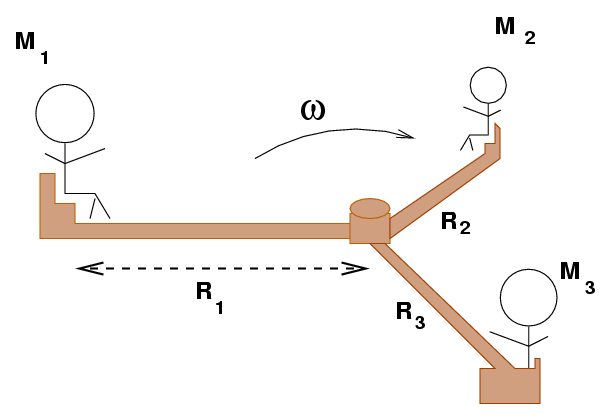
Okay, suppose that the angular speed changes to be 0.7 revolutions per second. How much work must you do to compute the new kinetic energy?
That's quite a bit of work: seven computations.
Q: Is there any way to make this calculation faster and easier?
Is it possible to arrange things so that all we need
to do when the angular velocity changes is perform
ONE new computation?
Yes, there IS a way to simplify the calculation of rotational kinetic energy -- and other quantities, too, as we shall see.
We can simplify the overall calculation into a single, familiar-looking equation with just two variables
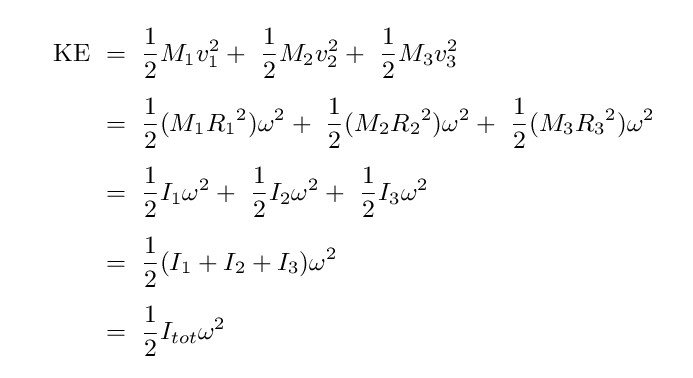
if we define a new quantity, the moment of inertia, I. And once we know this moment of inertia for Jack, Fred, and Bob, we can compute their rotational kinetic energy for some new angular speed in just one step.
But ... just what is this new entity, "moment of inertia?" How do we calculate it, in general?
Well, for a compact mass, it is simply a combination of mass and distance-from-axis-of-rotation:
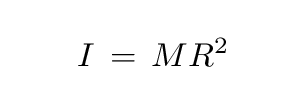
Q: What are the units of moment of inertia?
What IS this "moment of inertia"? You may recall that "inertia" is a fancy term which refers to the resistance of a body to a change in its motion. Items with large inertia -- like trucks and whales -- are hard to start moving, and hard to STOP moving once they get going. Items with small inertia -- like ping-pong balls and mice -- are easy to accelerate.
In a similar fashion, the "moment of inertia" measures the resistance of a body to a change in its rotation. A body with a large moment of inertia is hard to get spinning ... but, once it is spinning, is hard to stop. A body with a small moment of inertia is easy to start spinning, and easy to stop.
 Copyright © Michael Richmond.
This work is licensed under a Creative Commons License.
Copyright © Michael Richmond.
This work is licensed under a Creative Commons License.